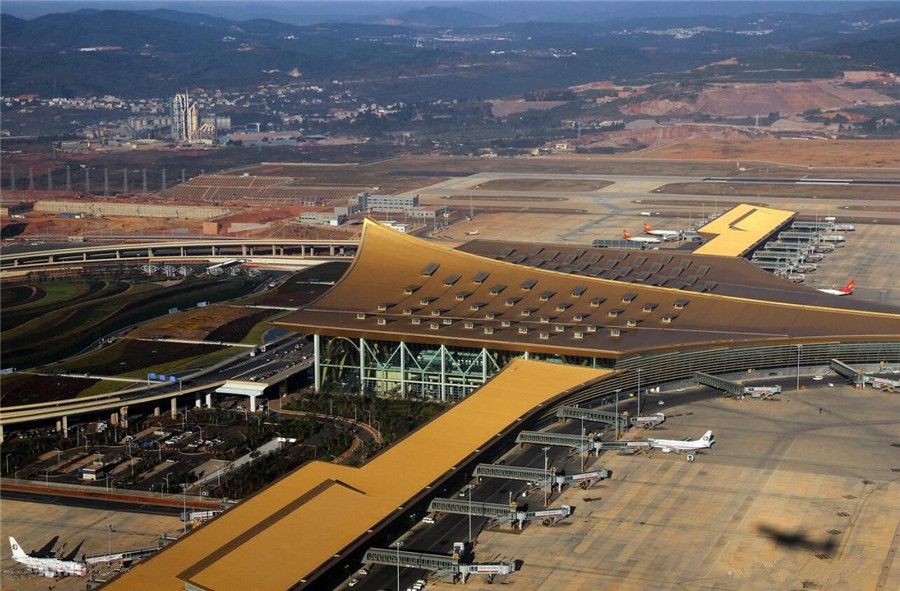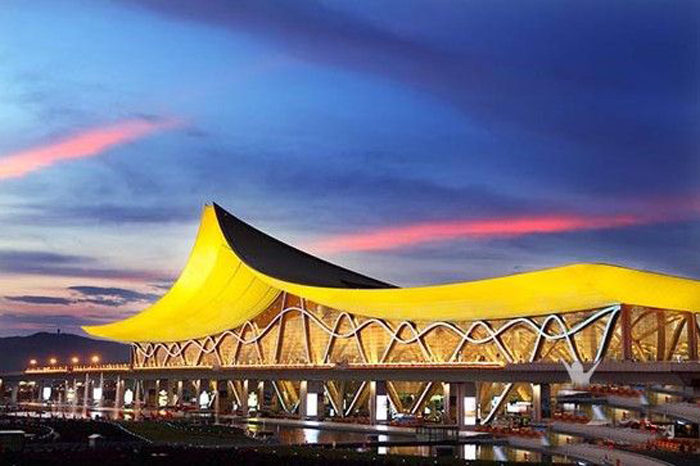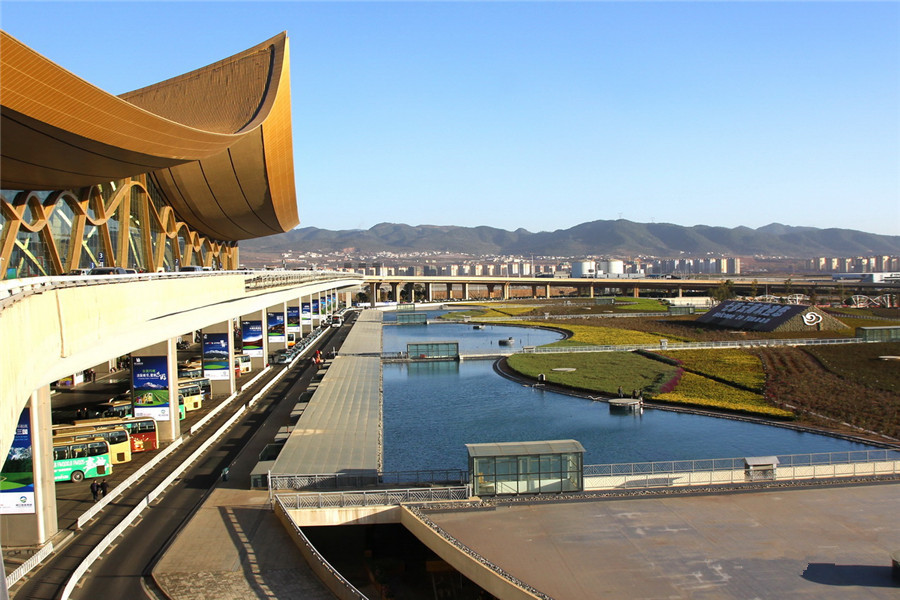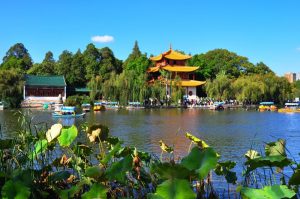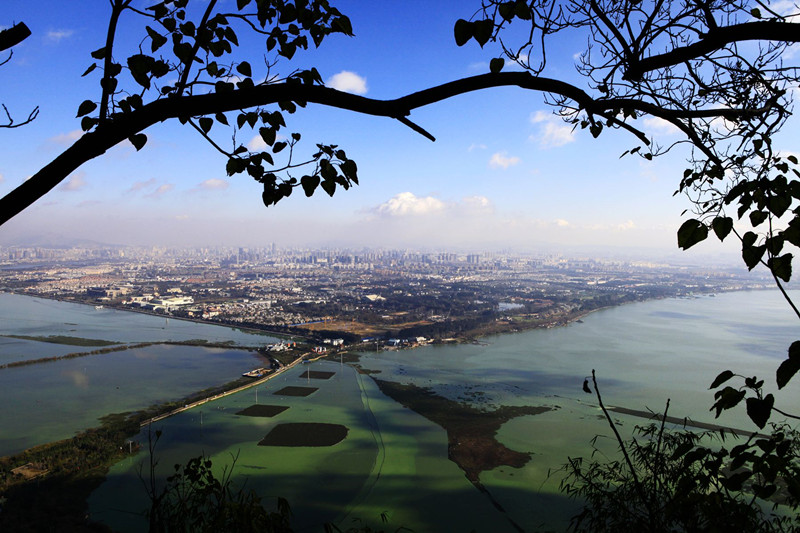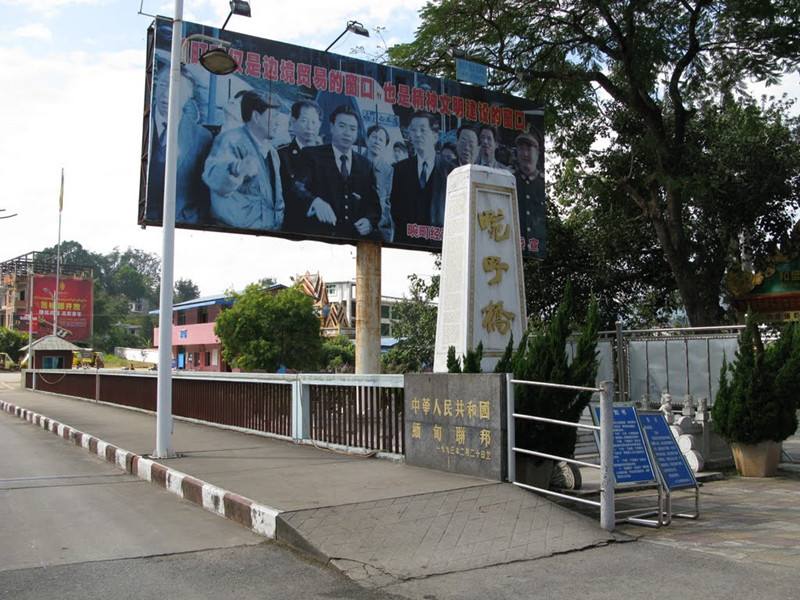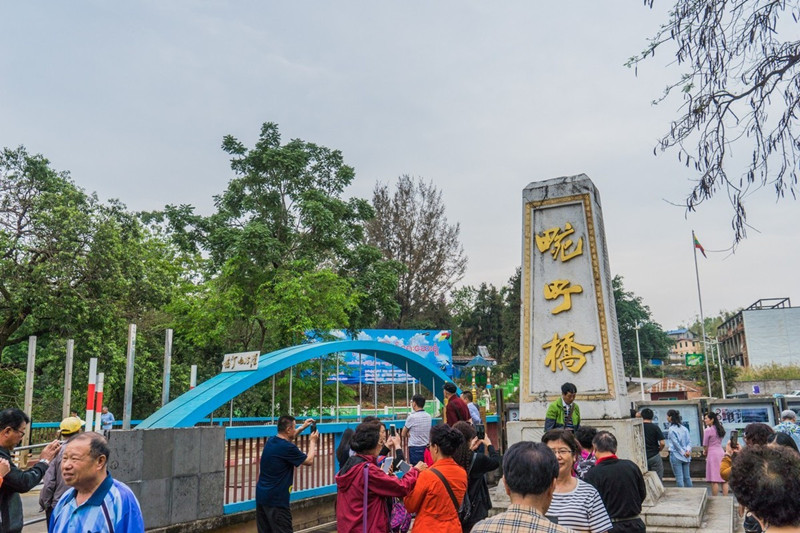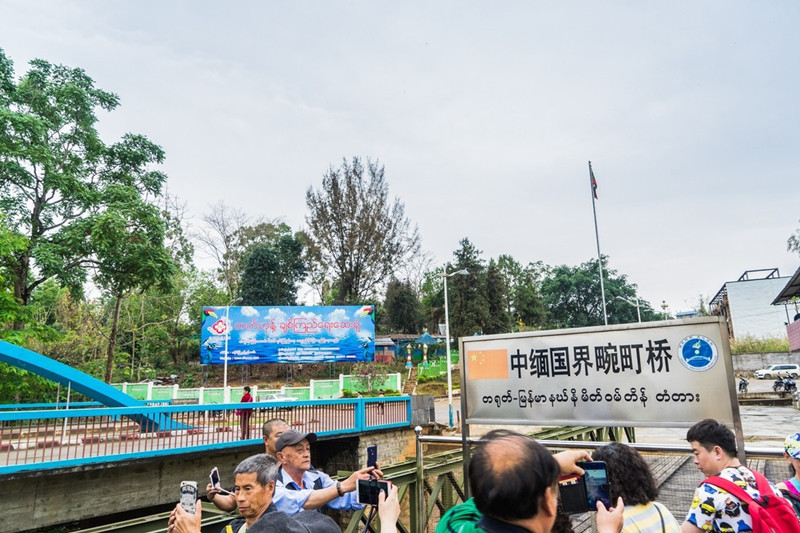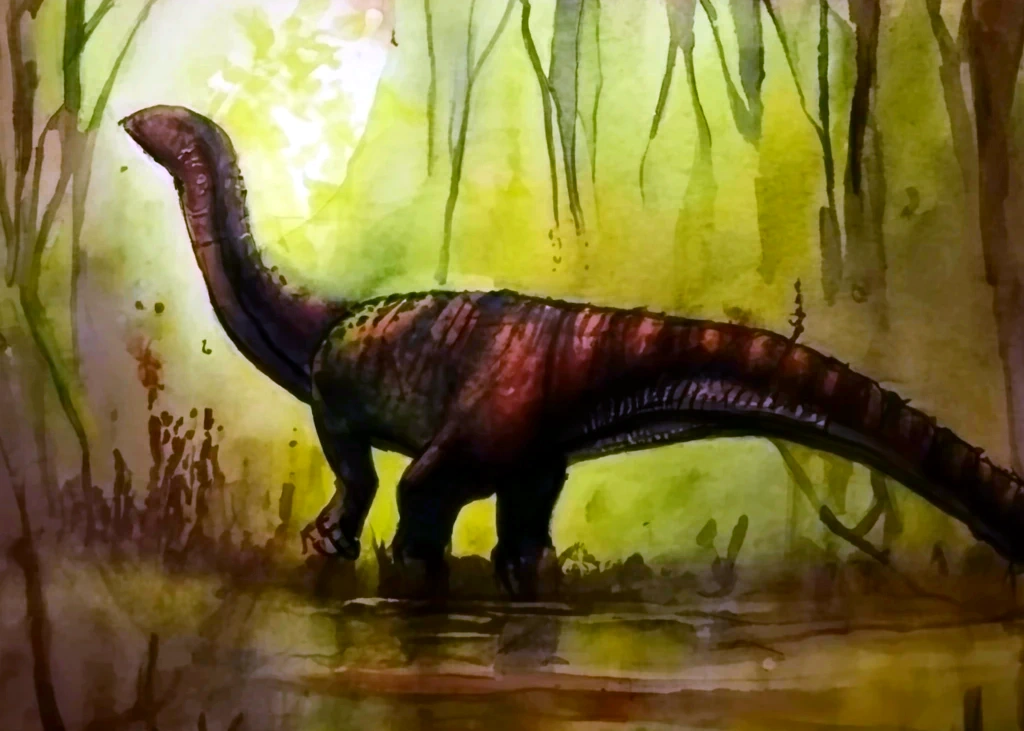Kunming Airport Economic Zone (KAEZ) is a significant economic development initiative strategically located around the Kunming Changshui International Airport in Yunnan Province, China. This zone is designed to leverage the airport’s pivotal role as a major transportation hub in Southwest China, promoting economic growth, industrial development, and international connectivity.
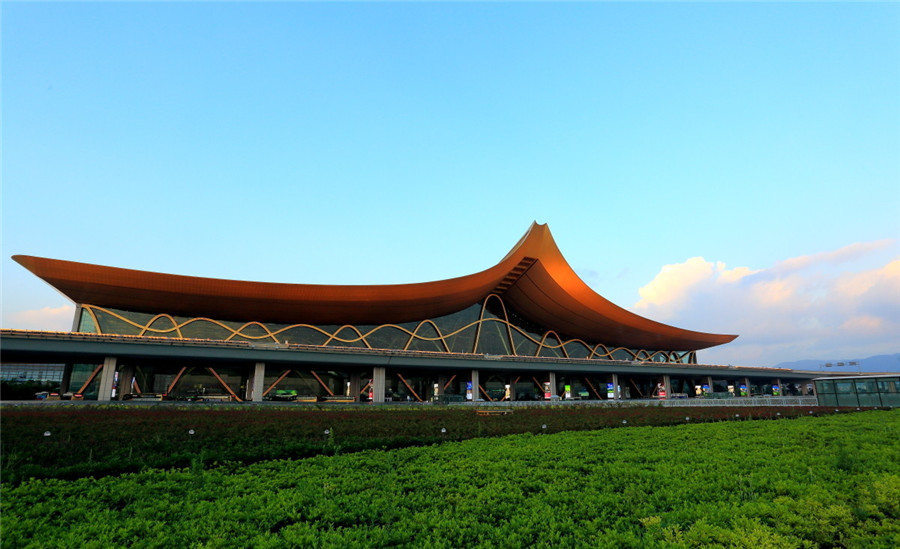
Overview
Location: Kunming Airport Economic Zone is situated adjacent to Kunming Changshui International Airport, approximately 24 kilometers northeast of Kunming City, the provincial capital of Yunnan Province.
Purpose: The primary objective of KAEZ is to integrate regional economic development with the operational capabilities of Kunming Changshui International Airport. It aims to enhance industrial competitiveness, attract investment, and foster innovation-driven industries.
Key Features and Initiatives
- Logistics and Transportation Hub:
- KAEZ serves as a pivotal logistics and transportation hub, leveraging Kunming Changshui International Airport’s extensive air cargo operations and passenger traffic.
- The zone facilitates seamless connectivity with major domestic and international markets, supporting efficient logistics operations, supply chain management, and international trade.
- Industrial Diversification:
- KAEZ promotes industrial diversification by attracting advanced manufacturing, high-tech industries, and logistics enterprises.
- It focuses on sectors such as aerospace, aviation services, electronic information, biopharmaceuticals, and high-end manufacturing to drive economic growth and technological innovation.
Kunming Changshui International Airport
- Innovation and Technology Development:
- The zone fosters innovation-driven industries, research and development (R&D) activities, and technology transfer initiatives.
- It supports the establishment of technology parks, incubators, and innovation centers to nurture start-ups, attract talent, and promote industry-academic collaboration.
- Trade and Investment Facilitation:
- KAEZ offers favorable policies, financial incentives, and streamlined administrative procedures to attract domestic and international investment.
- It provides comprehensive support services for businesses, including investment consulting, project financing, and business development assistance.
- Infrastructure Development:
- Infrastructure development is a key priority within KAEZ, focusing on enhancing transportation networks, utilities, and public facilities.
- The zone invests in road connectivity, airport infrastructure, telecommunications, and energy resources to support industrial operations and urban development.
- Environmental Sustainability:
- KAEZ prioritizes environmental sustainability and green development practices to minimize ecological impact and promote resource conservation.
- It integrates eco-friendly technologies, energy-efficient solutions, and waste management initiatives to achieve sustainable growth and environmental stewardship.
- Strategic Location and Connectivity:
- The proximity to Kunming Changshui International Airport provides KAEZ with strategic advantages in international trade, air cargo logistics, and passenger travel.
- It serves as a gateway linking Southwest China with Southeast Asia, facilitating cross-border trade, regional integration, and economic cooperation.
Kunming Changshui International Airport
Conclusion
The Kunming Airport Economic Zone plays a crucial role in advancing regional economic development, industrial diversification, and international connectivity in Yunnan Province. By leveraging the strategic location and operational capabilities of Kunming Changshui International Airport, KAEZ creates opportunities for business innovation, investment attraction, and sustainable development. Experience the synergy of logistics excellence, technological advancement, and economic dynamism at Kunming Airport Economic Zone, driving forward the economic prosperity and global competitiveness of Southwest China.
Kunming Dianchi Lake is among the 12 national tourism resorts in China approved by the State Council in 1992 and the only one located in an inland province. At present, it covers an area of 47.5 square kilometers, including Haigeng District with 22.5 square kilometers and Dayu District with 25 square kilometers, and has a total population of 110,000.
Wanding Border Economic Cooperation Zone (WTBECZ) is a Chinese State Council-approved Industrial Park based in Wanding Town, Ruili City, Dehong Prefecture, Yunnan, China, founded in 1992 and was established to promote trade between China and Myanmar. The zone spans 6 km sq. and is focused on developing trading, processing, agriculture resources and tourism.
The Kunming Economic and Technology Development Zone (KETDZ), is a state-level economic development zone established on February 13, 2000 in East Kunming, Yunnan Province, China. It is administratively under Kunming Prefecture. It has a developed area of 6 square kilometers.
Kunming Economic and Technological Development Zone (KETDZ) is a national-level development zone approved by the State Council of China. Established in 1992, it is strategically located in Kunming, the capital city of Yunnan Province in southwest China.
Overview
- Establishment: Approved by the State Council in 1992.
- Location: Situated in Kunming, Yunnan Province, approximately 24 kilometers northeast of Kunming city center.
- Area: Covers a significant land area adjacent to Kunming Changshui International Airport, enhancing its accessibility and economic integration with global markets.
- Administrative Body: Operates under the administrative jurisdiction of Kunming city, facilitating coordinated urban planning and development initiatives.
Objectives
- Economic Integration: Integrate regional economic development with Kunming Changshui International Airport’s operational capabilities.
- Industrial Growth: Foster growth in advanced manufacturing, high-tech industries, and logistics sectors.
- Innovation Hub: Promote innovation-driven industries, research and development (R&D) activities, and technology transfer initiatives.
- Investment Attraction: Offer favorable policies, financial incentives, and streamlined administrative procedures to attract domestic and international investment.
Key Features
- Logistics Hub: Utilizes Kunming Changshui International Airport’s extensive air cargo operations and passenger traffic to support efficient logistics operations and international trade.
- Industrial Diversification: Focuses on sectors such as aerospace, aviation services, electronic information, biopharmaceuticals, and high-end manufacturing.
- Infrastructure Development: Prioritizes enhancing transportation networks, utilities, telecommunications, and energy resources to support industrial operations and urban development.
- Environmental Sustainability: Implements eco-friendly technologies and waste management initiatives to achieve sustainable growth and minimize ecological impact.
Strategic Importance
- Gateway to Southwest China: Strategic location enhances connectivity with Southeast Asia, supporting cross-border trade, regional integration, and economic cooperation.
- International Connectivity: Facilitates global connectivity through Kunming Changshui International Airport, positioning KETDZ as a key player in international trade and investment.
Future Directions
- Urban Development: Continues to expand urban infrastructure and residential areas to accommodate population growth and enhance quality of life.
- Technological Advancement: Focuses on fostering innovation, entrepreneurship, and industry-academic collaborations to drive technological advancement and economic competitiveness.
- Sustainable Growth: Upholds environmental stewardship and green development practices to ensure long-term sustainable growth and community well-being.
Nanping Business Street in Kunming
Industrial structure
The KETDZ has formed the industrial chain with the following major industries as its pillar industries:
- tobacco and related industries
- IT and electronics manufacturing
- bio-pharmaceuticals, food processing
- new materials development industry
Investment priorities
- Established industries
- integrated optical-electric-mechanical industry
- biofood industry
- bio-pharmaceutical industry
- Commercialization and marketing
- information electronics
- high-efficiency agriculture
- new materials
- new building materials
- environment-friendly technologies
- Investment and modernization
- Logistics
- Trading services
- Economic spin-offs
- Venture capital
- Intermediary services
- Cultural programs
- Educational programs
Communication and transportation
Road
The KETDZ is 4 kilometers from the downtown Kunming, where the highways lead straight to the China-Laos border town of Mohan, the China-Vietnam border town of Hekou, and the China-Myanmar (Burma) border town of Ruili. All three border towns are rated as Grade A border ports of China. All the highways within a radius of 200 kilometers from Kunming are of high-grade standards.

Railway
A railroad network has been built around Kunming, consisting of the Guiyang-Kunming, Chengdu-Kunming, Nanning-Kunming, Guangtong-Dali, and Yunnan-Vietnam Railways. The KETDZ is 2 kilometers away from the Kunming East Railway Station, and 4 kilometers from the Kunming South Railway Station, both are rail centers for both cargo and passenger transportation.
Air transportation
The Kunming International Airport, 1.8 kilometers from the KETDZ, is Yunnan’s most important gateway to international destinations. It operates eight air routes to overseas airports such as Singapore, Rangoon, Kuala Lumpur, Seoul, Osaka, and more than 70 domestic routes to Hong Kong, Macao, and other cities.
Harbor
The KETDZ has access to ocean shipping at the Beihai and Fangcheng Ports in Guangxi province via the Nanning-Kunming Railway, at Zhanjiang Port of Guangdong province via the Guiyang-Kunming Railway, at Shanghai Port, and at Haiphong of Vietnam via the Yunnan-Vietnam Railway.
Conclusion
The Kunming Economic and Technological Development Zone (KETDZ) plays a pivotal role in advancing regional economic development, industrial diversification, and international connectivity in Yunnan Province. By leveraging its strategic location and comprehensive development strategies, KETDZ continues to attract investments, foster innovation, and contribute to the economic prosperity of Southwest China.
Yunnan Province in China hosts several Economic and Technological Development Zones (ETDZs), each contributing to regional economic growth, industrial development, and international trade. Here are some notable ETDZs in Yunnan:
- Kunming Economic and Technological Development Zone (KETDZ):
- Location: Located in the southeastern part of Kunming, the capital city of Yunnan Province.
- Focus: KETDZ prioritizes industries such as electronics, information technology, biomedicine, and modern logistics. It aims to attract high-tech enterprises and promote technological innovation.
- Kunming Airport Economic Zone (KAEZ):
- Location: Adjacent to Kunming Changshui International Airport, about 24 kilometers northeast of Kunming City.
- Focus: KAEZ leverages the airport’s transportation hub status to promote industries like aviation services, aerospace, logistics, and high-end manufacturing. It supports international trade and investment.
- Yuxi Economic and Technological Development Zone:
- Location: Situated in the central part of Yuxi City, southwest of Kunming.
- Focus: Yuxi ETDZ emphasizes industries such as new materials, advanced equipment manufacturing, and modern agriculture. It aims to enhance industrial transformation, technological upgrading, and environmental sustainability.
- Chuxiong Economic and Technological Development Zone:
- Location: Located in Chuxiong City, central Yunnan Province.
- Focus: Chuxiong ETDZ focuses on agricultural processing, biotechnology, cultural tourism, and environmental protection industries. It aims to promote balanced regional development and enhance local economic competitiveness.
- Songming Yanglin Experimental Zone for County & Township Industries:
- Location: Situated in Songming County, northwest of Kunming.
- Focus: This experimental zone supports the development of county and township industries, emphasizing agricultural modernization, rural tourism, and cultural heritage preservation.
- Jiegao Border Trade Economic Zone:
- Location: Located in Jiegao Town, on the border with Myanmar in western Yunnan.
- Focus: Jiegao Border Trade ETDZ facilitates cross-border trade, logistics, and tourism. It serves as a gateway for economic cooperation between Yunnan Province and Southeast Asia.
- Hekou Border Economic Cooperation Zone:
- Location: Situated in Hekou Yao Autonomous County, bordering Vietnam in southern Yunnan.
- Focus: Hekou Border ETDZ promotes border trade, tourism, and cultural exchanges between China and Vietnam. It enhances economic integration and cooperation in the Greater Mekong Subregion.
These ETDZs in Yunnan Province play critical roles in attracting investment, promoting industrial transformation, fostering innovation, and facilitating international trade. They contribute significantly to Yunnan’s economic development strategies and regional prosperity.
Tourism and Vacation Zones
- Kunming Dianchi Tourism & Vacation Zone
- Kunming Airport Economic Zone
- Cang Mountain & Erhai Lake Tourism and Vacation Zone at Dali
- Xishuangbanna Tourism and Vacation Zone
- Tengchong Tourism and Vacation Zone
- Yangzonghai Lake Tourism and Vacation Zone
- Fuxian Lake Tourism and Vacation Zone
These zones are integral to Yunnan’s strategy for economic growth, international trade facilitation, and tourism development, leveraging the province’s diverse resources and strategic location.
Yunnanosaurus (/ˌjuːnænoʊˈsɔːrəs/ YOO-nan-o-SAWR-əs) is an extinct genus of sauropodomorph dinosaur that lived approximately 201 to 168 million years ago in what is now the Yunnan Province, in China. Yunnanosaurus was a large sized, moderately-built, ground-dwelling, quadrupedal herbivore, that could also walk bipedally, and ranged in size from 7 meters (23 feet) long and 2 m (6.5 ft) high to 4 m (13 ft) high in the largest species.
Discovery
Yang Zhongjian (also known as C. C. Young) discovered the first Yunnanosaurus skeletons in the Lufeng Formation of Yunnan, China. The fossil find was composed of over twenty incomplete skeletons, including two skulls, it was excavated by Tsun Yi Wang. When first discovered, Yunnanosaurus was considered to be closely related to Lufengosaurus, but more recent research by Novas et al. (2011) shows that it is most closely related to Anchisaurus and Jingshanosaurus.
Description
Dentition
There were more than sixty spoon shaped teeth in the jaws of Yunnanosaurus, and were unique among early sauropodomorphs in that its teeth were self-sharpening because they “[wore] against each other as the animal fed.”[2] Scientists consider these teeth to be advanced compared to other early sauropodomorphs, as they share features with the sauropods.[2] However, scientists do not consider Yunnanosaurus to be especially close to the sauropods in phylogeny because the remaining portions of the animals body are distinctly “prosauropod” in design.[2] This critical difference implies that the similarity in dentition between Yunnanosaurus and sauropods might be an example of convergent evolution.[2]
Yunnanosaurus youngi
In 2007, Lü Junchang and colleagues described another species of Yunnanosaurus, Y. youngi (named in honor of C. C. Young). In addition to various skeletal differences, at 13 meters (42 ft) long Y. youngi was significantly larger than Y. huangi (which reached only 7 meters [23 ft]). Y. youngi is found later in the fossil record, hailing from the Middle Jurassic. The holotype specimen CXMVZA 185 consists of ten cervical vertebrae, fourteen dorsal vertebrae, three fused sacral vertebrae, seventeen caudal vertebrae, both pubic bones, both ischia, and the right illium. The skull of this species is not known.[3]
Juvenile Specimen ZMNH-M8739
In 2013, Sekiya et al. described the discovery of a juvenile individual which was assigned to what the authors termed “Yunnanosaurus robustus” (i.e. Y. huangi).[Note 1]Specimen ZMNH-M8739 consists of partial cranial material and an almost complete post-cranial skeleton. This individual possesses characteristic dentition that suggests a potentially unique feeding mechanism as evidenced a tooth–tooth wear facet on its mesial maxillary and dentary teeth, and maxillary teeth that have coarse serrations. Comparison of this juvenile specimen with adult specimens of Yunnanosaurus huangi reveals very distinctive growth changes.[4]
Classification
|
The type species, Y. huangi, was named by C. C. Young in 1942, who erected the family Yunnanosauridae to contain it, though the family currently comprises only this genus and sometimes Jingshanosaurus.[5] Young also named a second species, Y. robustus, in 1951,[2][6] but this has since been included in the type species.[2] The confusion in classification arose due to that the earliest specimens of Y. huangi were of juveniles individuals while the “Y. robustus” specimens represented fully grown adults.[2]Yunnanosaurus had been assigned to several taxa over the years, including Thecodontosauridae and Plateosauridae, but more recent phylogenetic analysis conducted by Novas et al. (2011) shows that this genus is part of the taxon Massopodain a clade with Anchisaurus and Jingshanosaurus.[1] Apaldetti et al. (2011) also found that Yunnanosaurus belonged in Massopoda, but found that this genus was more primitive than both Jingshanosaurus and Anchisaurus.[7]
Distinguishing anatomical features
A diagnosis is a statement of the anatomical features of an organism (or group) that collectively distinguish it from all other organisms. Some, but not all, of the features in a diagnosis are also autapomorphies. An autapomorphy is a distinctive anatomical feature that is unique to a given organism.
According to Sekiya et al. (2013), Yunnanosaurus can be distinguished from other dinosaurs based on the following characteristics:
- the absence of the anteroposterior expansion on the medial end of the astragalus
- the medium shaft of the metatarsal IV is dorsoventrally compressed
According to Lu et a. (2007), Yunnanosaurus youngi can be distinguished from Yunnanosaurus huangi based on the following characteristics:
- the sixth cervical vertebra is the longest among the vertebral column
- the neural spines of the posterior cervical vertebrae are short with an expanded distal end, which is wider than its anteroposterior length
- three sacral vertebrae are tightly fused with a stout sacrocostal yoke
- the ventral margin of the postacetabular process of the ilium is slightly concave
- the ischium is longer than the pubis
- the distal end of the pubis is round
Paleoecology
Provenance and occurrence
The type specimens of Yunnanosaurus huangi and Yunnanosaurus robustus were recovered in the Huangchiatien (Dahungtien) locality of the Lufeng Formation in Yunnan, China. The Y. huangi holotype specimen IVPP V20 and the Y. robustus holotype specimen IVPP V93, were collected by Chung Chien Young in terrestrial sediments from the upper dark/deep red beds of the Zhangjiawa Member of this formation, that are believed to have been deposited during the Sinemurian stage of the Jurassic period, approximately 199 to 190 million years ago.[8] Several other specimens assigned to Y. huangi (IVPP V54, IVPP V47, IVPP V61, IVPP V62, IVPP V63, IVPP V96, IVPP V264), and Y. robustus (IVPP V39, IVPP V94) were also recovered by Young in this locality. These specimens are all housed in the collection of the Institute of Vertebrate Paleontology and Paleoanthropology, in Beijing, China. In the years to come several more specimens assigned to these two species were recovered from Zhangjiawa Member of this formation.
Chung Chien Young had also explored the lower dark/dull purple beds of the Shawan Member of the Lufeng Formation and found more specimens that he later assigned to Y. huangi. Specimen IVPP V32 was collected by Young in 1938 in dark red, argillaceous sandstone that is believed to have been deposited during the Hettangian stage of the Jurassic period, approximately 201 to 199 million years ago.[8] Specimens IVPP V57, IVPP V60 and IVPP V272 were collected by Young in blue mudstone from the same formation and were also assigned to Y. huangi. These specimens from the Shawan Member are also housed in the collection of the Institute of Vertebrate Paleontology and Paleoanthropology.
The type specimen of Yunnanosaurus youngi was recovered at the Banqing Houshanliangzi locality of the Zhanghe Formation, in Yuanmou County of Yunnan Province, China. The holotype specimen CXMVZA 185 was collected in 2000 in terrestrial sediments deposited during the Aalenian and Bajocian stages of the Middle Jurassicperiod, approximately 174 to 168 million years ago. This specimen is housed in the collection of the Chuxiong Museum.
Fauna and habitat
Yunnanosaurus huangi and Yunnanosaurus robustus shared their paleoenvironment with the ornithischians Bienosaurus, and Tatisaurus, the sauropodomorphsGyposaurus, Lufengosaurus, and Jingshanosaurus, and the theropods Sinosaurus triassicus and Eshanosaurus.
Notes
- ^ An unfused neural arch and long bone surface texture that is finely grooved, suggest that this individual is a juvenile.
Yunnanolepis is an extinct genus of primitive antiarch placoderm. The fossils of the various species are found in Early to Middle Devonian strata in Southern China and Middle Devonian strata in Vietnam. Yunnanolepis is a genus of early vertebrate fish known from Yunnan Province, China.
Yizhousaurus is a genus of basal sauropodiform dinosaurs which existed in what is now Lower Lufeng Formation, Yunnan Province of southern China during the lower Jurassic period. Identified from a nearly complete and exquisitely preserved skeleton, it is the most complete basal sauropod currently known with intact skull. Although its name was revealed in a 2010 Geological Society of America abstract by Sankar Chatterjee, T. Wang, S.G. Pan, Z. Dong, X.C. Wu, and Paul Upchurch, it wasn’t validly named and described until 2018. The type species is Yizhousaurus sunae.
Yimenosaurus (meaning “Yiman reptile”) is an extinct genus of plateosaurid sauropodomorph dinosaur that lived in China in the Early Jurassic. The genus was first named in 1990 by Ziqi Bai, Jie Yang and Guohui Wang, along with its type and only species, Yimenosaurus youngi. The species name honours renowned Chinese paleontologist Yang Zhongjian, the father of Chinese paleontology, known as C.C. Young in English. Known material includes the holotype, an almost complete skull and mandible, as well as incomplete cervical and dorsal vertebrae, a mostly complete sacrum, an ilium, ischia, partial ribs and complete femur, and a paratype, a well-preserved postcrania with a fragmentary skull.
Discovery and naming
Known from two specimens, Yimenosaurus is relatively complete for its type of sauropodomorph. The specimens were described originally in 1990 by Ziqi Bai, Jie Yang and Guohui Wang, and the describers named for them a complete binomial, Yimenosaurus youngi. Bai et al. created the genus name from Yimen county, the place of discovery in Yunnan Province, and the Latin word saurus, meaning “reptile”. For the species, it was chosen to honour Yang Zhongjian, the father and founder of all Chinese paleontology, who was well known for his work on “prosauropods”, and called in English C.C. Young. Of the two specimens, the holotype was chosen, known from a more complete skull. The holotype, YXV 8701, is known from a complete skull and mandibleonly lacking the anterior end of the jaw and minor fragments of bone around the orbit, as well as the postcranial elements of fragmentary cervical and dorsal vertebrae, all sacral vertebrae, an ilium, both ischia, a complete femur, and incomplete and damaged ribs. YXV8702, the paratype, is known from an only incomplete skull, many cervical and dorsal vertebrae, three sacrals, a few caudal vertebrae, a scapula-coracoid, an entire pelvis, and almost both entire hindlimbs.
Discovery and Naming
- Discovery: Fossils of Yimenosaurus were discovered in the Lower Jurassic-aged rock formations of Yimen County, Yunnan Province, China.
- Name Origin: The genus name “Yimenosaurus” is derived from “Yimen,” the county where it was discovered, and “saurus,” meaning lizard in Greek.
Physical Characteristics
- Anatomy: Yimenosaurus is known from relatively complete skeletons, including elements of the skull, vertebrae, ribs, and limbs.
- Size: It was a medium-sized sauropodomorph dinosaur, comparable in size to other early sauropodomorphs, reaching lengths of about 6–8 meters (20–26 feet).
Classification
- Sauropodomorph Dinosaur: Yimenosaurus belongs to the sauropodomorphs, a group of herbivorous dinosaurs characterized by their long necks, long tails, and large bodies.
- Position: It is considered an early sauropodomorph and is closely related to other basal sauropodomorphs from the Early Jurassic period.
Paleoecology
- Habitat: During the Early Jurassic period, Yunnan was characterized by a warm, humid climate with lush vegetation. Yimenosaurus would have inhabited this terrestrial environment.
- Contemporary Fauna: Yimenosaurus coexisted with other dinosaurs such as Lufengosaurus, Xingxiulong, early theropods, and various other herbivorous and carnivorous dinosaurs.
Significance
- Early Sauropodomorph Diversity: Yimenosaurus contributes to our understanding of the early diversification of sauropodomorph dinosaurs. Its discovery in Yunnan expands the geographic range and temporal distribution of early sauropodomorphs.
- Paleontological Importance of Yunnan: The discovery of Yimenosaurus in Yunnan highlights the region’s significance in preserving Early Jurassic dinosaurs. It provides insights into the evolution and ecology of sauropodomorphs during this period.
Yimenosaurus is an important fossil find that adds to our knowledge of sauropodomorph dinosaurs and the ancient ecosystems of Yunnan Province, China.
Xixiposaurus is a genus of prosauropod dinosaur which existed in what is now Lower Lufeng Formation, China during the lower Jurassic period.[1] It was first named by Sekiya Toru in 2010 and the type species is Xixiposaurus suni.
Where was it found?
The remains of Xixiposaurus were found in 1984 at the Yujingzi Basin in China. These fossils were uncovered within layers of rock known as the Early Cretaceous Huiquanpu Formation, which has proven rich in specimens. Thanks, to preserved findings of Xixiposaurus scientists have gained valuable insights into its anatomy and behavior.
Located in Chinas Gansu Province these creatures roamed the Earth 160 million years ago during the Jurassic period. Belonging to the Oviraptorosauria family this dinosaur was estimated to reach a height of, around 1 meter and a length of 2 meters. It had a diet that consisted of plants possibly supplemented with insects or animals.
Characteristic and Behavior
One of the characteristics of Xixiposaurus is its feathered body. Chinese paleontologists discovered this in 2012 when they unearthed the dinosaur’s remains. Recent research has confirmed that this dinosaur was indeed covered in feathers making it one of the known feathered dinosaurs.
Another intriguing feature of Xixiposaurus is its slender snout indicating that it may have been selective in its omnivorous diet choices. Its teeth were serrated, suggesting it possessed a biting force and could consume vegetation.
How do Feathers develop?
The finding of this dinosaur has provided insights into dinosaur evolution. Its feathered body suggests a link to birds as an ancestor. Scientists believe it offers a glimpse, into how dinosaurs developed feathers during their early stages. Interestingly the fossils of Xixiposaurus contained the remains of dinosaurs suggesting that it might have lived in groups or packs similar, to how many modern birds exhibit behaviors.
What did it look like?
The Xixiposaurus was a dinosaur measuring around six feet in length. It had a body, and a tail and stood on two legs. Its front limbs were shorter than its hind limbs allowing it to move swiftly on two legs. Its skull was. Featured a snout. Interestingly it possessed a beak without teeth that it used for consuming vegetation.
Physical Characteristics of the Xixiposaurus
This creature was classified as a dinosaur with an approximate length of 6.5 feet. It had a head, a neck, and a relatively short tail. The dinosaur had a physique. It is categorized as an ornithopod dinosaur due to its bird-like hip structure.
Diet and Behavior of the Xixiposaurus
Scientists deduce from the shape of its teeth that the Xixiposaurus was an herbivore primarily relying on plants, for sustenance. The dinosaur likely utilized its beak to consume vegetation while using its molars to grind it up. Not much information is available, about the behavior of this dinosaur. It is believed that this dinosaur was a creature that lived in groups.
What did it eat?
As mentioned before the Xixiposaurus was a dinosaur that primarily consumed plants. Its beak, which lacked teeth suggests that it used its mouth to trim vegetation. During the period the Yujingzi Basin was rich with forests and abundant plant life for the Xixiposaurus to feed on.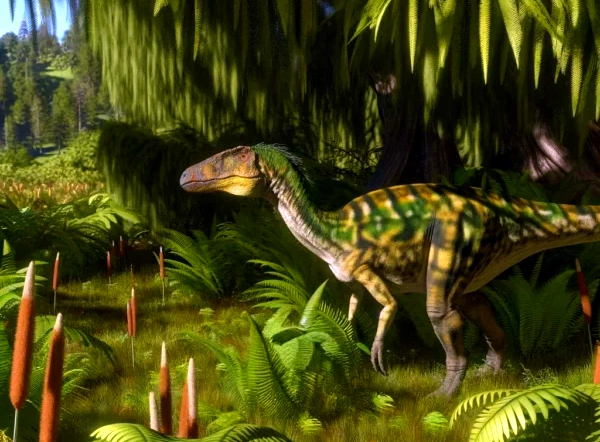
Significance of the Xixiposaurus
The discovery of these dinosaurs carries importance for many reasons. Firstly it contributes to our knowledge of the range of dinosaur species that thrived during the Mesozoic era. Additionally, it offers insights into the evolution of dinosaurs which were among the most successful dinosaur groups. Moreover finding Xixiposaurus fossils in the Lianmuqin Formation indicates that this region experienced levels of dinosaur diversity during the Cretaceous period.
Despite its stature, It holds value within scientific circles. As an unearthed species it enhances our understanding of dinosaur evolution and diversity throughout the period. Through analyzing its anatomy we can gain insights, into how ornithopods adapted to their changing environment over time.
Future of Xixiposaurus Research
Similar to dinosaur species there are still many unknowns, about the Xixiposaurus. Scientists will continue examining these fossils to gain insights into the traits, behaviors, and ecological roles of this dinosaur. This research has the potential to unveil revelations about the path of ornithopod dinosaurs and deepen our understanding of biodiversity during the Mesozoic era.
Respiratory Adaptation
Belonging to the sauropod group renowned for their necks and tails one distinctive feature of this dinosaur was its adaptation. It possessed breathing tubes that extended from its nostrils to its lungs functioning as a snorkel that allowed it to breathe while submerged in water.
Close Relationship
It shared a kinship with another sauropod called Mamenchisaurus. Both dinosaurs exhibited characteristics such as necks, tails, and dentition.
Communication:
Like dinosaurs, it is speculated that these creatures utilized vocalizations as a means of communication with other members of their species. However, due to the preservation of tissues, in dinosaur fossils determining what these vocalizations sounded like remains challenging.
Discovery and Naming
The genus Xixiposaurus was named in 1983 by Dong Zhiming. Fossils were found in the Lower Lufeng Formation of Yunnan, which dates to the Sinemurian stage of the Early Jurassic.
Description
Xixiposaurus is characterized by its medium size and typical features of basal sauropodomorphs. It likely had a bipedal stance, though some remains suggest it might have been capable of quadrupedal locomotion.
Paleobiology
Like other sauropodomorphs of its time, Xixiposaurus was herbivorous and would have grazed on vegetation. Its skeletal structure indicates adaptations for supporting its body weight and efficient locomotion.
Paleoecology
The Lower Lufeng Formation in Yunnan, where Xixiposaurus fossils were found, is known for its rich dinosaur fauna. It includes other sauropodomorphs like Lufengosaurus, Yunnanosaurus, and Jingshanosaurus, as well as various theropods and early mammals.
Significance
Xixiposaurus contributes to our understanding of the early evolution of sauropodomorph dinosaurs in Asia, particularly in the context of the diverse fauna of the Early Jurassic Yunnan ecosystem.
Qujing Economic and Technological Development Zone
Qujing Economic and Technological Development Zone (QETDZ) is a significant provincial development zone approved by the Yunnan Provincial Government in August 1992. Located in the eastern part of urban...
Kunming Airport Economic Zone
Kunming Airport Economic Zone (KAEZ) is a significant economic development initiative strategically located around the Kunming Changshui International Airport in Yunnan Province, China. This zone is designed to leverage...
Dianchi Tourism & Vacation Zone in Kunming
Kunming Dianchi Lake is among the 12 national tourism resorts in China approved by the State Council in 1992 and the only one located in an inland province. At...
Wanding Border Economic Cooperation Zone
Wanding Border Economic Cooperation Zone (WTBECZ) is a Chinese State Council-approved Industrial Park based in Wanding Town, Ruili City, Dehong Prefecture, Yunnan, China, founded in 1992 and was established to promote trade between China an ...
Kunming Economic and Technological Development Zone
The Kunming Economic and Technology Development Zone (KETDZ), is a state-level economic development zone established on February 13, 2000 in East Kunming, Yunnan Province, China. It is administratively under Kunming Prefecture. It has a dev ...
Economic and Technological Development Zones in Yunnan
Yunnan Province in China hosts several Economic and Technological Development Zones (ETDZs), each contributing to regional economic growth, industrial development, and international trade. Here are some notable ETDZs in...
Yunnanosaurus in Yunnan
Yunnanosaurus (/ˌjuːnænoʊˈsɔːrəs/ YOO-nan-o-SAWR-əs) is an extinct genus of sauropodomorph dinosaur that lived approximately 201 to 168 million years ago in what is now the Yunnan Province, in China. Yunnanosaurus was a large sized, moderat ...
Yunnanolepis in Yunnan
Yunnanolepis is an extinct genus of primitive antiarch placoderm. The fossils of the various species are found in Early to Middle Devonian strata in Southern China and Middle Devonian strata in Vietnam. Yunnanolepis is a genus of early...
Yuanmousaurus in Yunnan
Yuanmousaurus was a sauropod dinosaur from the Middle Jurassic period of China. Known from incomplete remains, it was discovered in 2000 from the Zhanghe Formation in Yuanmou County, Yunnan...
Yizhousaurus in Yunnan
Yizhousaurus is a genus of basal sauropodiform dinosaurs which existed in what is now Lower Lufeng Formation, Yunnan Province of southern China during the lower Jurassic period. Identified from a nearly complete and exquisitely preserved sk ...
Yimenosaurus in Yunnan
Yimenosaurus (meaning “Yiman reptile”) is an extinct genus of plateosaurid sauropodomorph dinosaur that lived in China in the Early Jurassic. The genus was first named in 1990 by Ziqi Bai, Jie Yang and Guohui Wang, along with...
Xixiposaurus in Yunnan
Xixiposaurus is a genus of prosauropod dinosaur which existed in what is now Lower Lufeng Formation, China during the lower Jurassic period. It was first named by Sekiya Toru in 2010 and the type species is Xixiposaurus suni. Where was i ...
Tips Before Travel
Bring copies of your passport
Don't assume you're restricted to the main hubs of Beijing and Shanghai, our tours can start from any city.
Register with your embassy
For your safety, please register with the Embassy.
Always have local cash
Exchange some local currency for your trip
Our Team
Customize a Trip
Start planning your tailor-made holiday to China by contacting one of our specialists. Once enquired, you’ll get a response within 0.5~23.5 hours.



